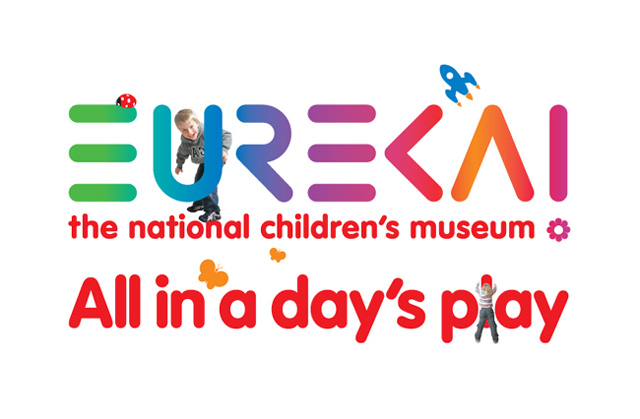The ‘enablers’ here at Eureka! are delighted to educate and, at the same time, entertain our visitors. We are also very keen to encourage, enthuse and excite the children (in fact many things beginning with ‘e’, it seems!). One of the ways we do this is by delivering science busking sessions. It’s amazing how people’s opinions of science change when they discover what fun it is to play with science. I always start my sessions with a question – “Who loves science?” I ask the question again at the end of the session and the response is always considerably more enthusiastic.
A 'science busking' session lasts about 20 minutes and consists of up to a dozen interactive demonstrations (of which we have a repertoire of about 40). For example, learning about density becomes magical when the children are introduced to ‘Bob the Pen Lid’, who has been trained to dive and float on command (providing you say the magic word –‘please’). When they spot the ‘trick’ and hear the explanation they are far from disappointed as I explain that science is actually better than magic. If Bob was magic I’d be the only person with a pen lid that obeys my commands; whereas, now that they all know the science, they can go home and make their own Bob and amaze their friends.
Most of the demonstrations are designed to be easily repeated at home in order to encourage children to try things out for themselves. I also tell a true story that shows that anybody can be a scientist – all you need to do is ask questions and try to find out the answer.
Sometimes we use a powder called Instasnow (a super absorbent polymer called sodium Polyacrylate) for one of the demonstrations. Water added to a scoopful in a child’s cupped hands produces a flurry of ‘snow’ cascading out of their hands and into a waiting bowl. We also do fabulous demonstration using milk, food colouring and washing-up liquid (see below). During one session a young boy, about six years old, asked “What would happen if you put that ‘magic’ powder into the milk and food colouring?” It was a good question, a scientist’s question, so what else could we do but put it to the test. We added a few scoops of Instasnow to the milk and it slowly soaked up the colourful milk, drawing it to the middle of the plate and making a colourful little snow ‘volcano crater’. We now do that demonstration ourselves – always giving credit to that six year old scientist who invented it.
Whenever I do those demos and tell that story I have to allow extra time at the end of the session because, invariably, I am inundated by a crowd of children asking “What if we put this in that?” and “Can we try mixing these together?” etc. It just goes to show that, given the opportunity, children are always incredibly eager to ‘play with science’.
Have a go at colour-changing milk at home
You'll need: milk (whole), a dinner plate, food colourings, washing up liquid and cotton buds.
Method
- Pour enough milk onto the plate to completely cover the bottom
- Add one drop of each of the different colours of food colouring to the milk. Keep the drops close together in the centre of the plate of milk
- Use a clean cotton bud to ‘marble’ the milk
- Repeat first two steps
- Take another cotton bud, place a drop of washing up liquid on the end and touch the middle of the milk with it. Look at that burst of colour!



Explanation
Milk might seem to be a liquid but actually it is mostly water with lots of little droplets of fat and protein and stuff floating in it. These little bits of solids are attracted to each other and bond together as if they were all holding hands, making ‘walls’ that the food colouring can’t pass! You can use your cotton bud to move the colours around the ‘walls’ to make a marbling effect.
When you add soap it actually breaks the bonds that are holding the little fat and protein droplets in place and they zoom off in all directions; which bumps the food colours and makes them zing off to the edge of the plate, giving you a real 'wow!' moment.
Jill Ward is an Enabler in the Front of House team at Eureka!
Jill Ward is an Enabler in the Front of House team at Eureka!






No comments:
Post a Comment